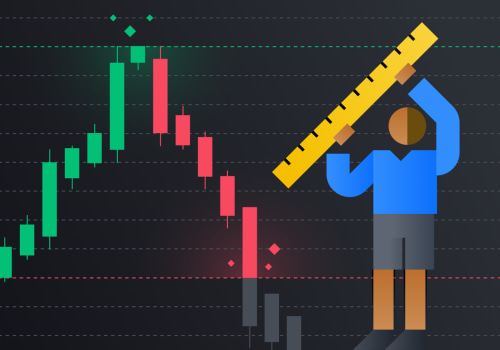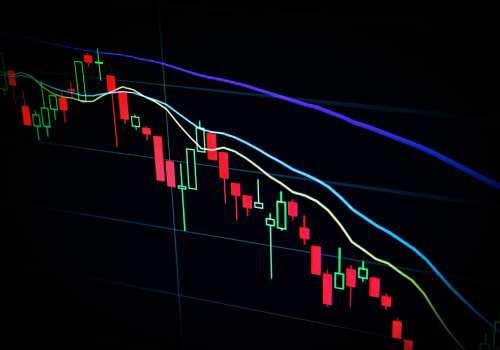Trend trading strategies can be a great way to generate returns in the financial markets. However, these strategies come with their own unique set of risks and rewards. It is essential for traders to understand the potential risks and rewards of trend trading before embarking on this investment strategy. In this article, we will explore the risk and reward of trend trading strategies, as well as discuss the different strategies available to help traders make informed decisions when managing their risk.
By the end of this article, you will have a better understanding of the risks and rewards associated with trend trading strategies and how to use them to your advantage.
What is trend trading?
Trend trading is a type of investment strategy that involves focusing on a particular trend in the market. This could be a short-term trend (like the stock market’s recent performance) or a long-term trend (such as the rise of technology stocks over the last decade). Trend traders look for patterns in the market that indicate a trend and use this knowledge to make investments.What are the risks associated with trend trading?
Like any investment strategy, there are risks associated with trend trading.The most common risk is that the trend may not continue, leaving you with losses if you bet on the wrong side of the trend. Additionally, some trends may be more volatile than others, meaning that there is a greater chance of losses if the trend changes unexpectedly.
What are the potential rewards of trend trading?
If done correctly, trend trading can offer investors great rewards. By following the trend, traders can capitalize on short-term profits or take advantage of longer-term gains.Additionally, by keeping an eye on the overall market and following trends, investors can diversify their portfolios and reduce their overall risk.
How can traders reduce their risk while maximizing their returns?
There are several steps traders can take to reduce their risk while maximizing their returns. First, they should research and understand the trends they are investing in to ensure they are making informed decisions. Additionally, they should diversify their investments across different asset classes and sectors, as well as use stop-loss orders to minimize losses if a trend reverses.Examples of successful trend trading strategies. One example of a successful trend trading strategy is the “buy and hold” strategy. This involves buying a stock when it is trending up and holding on to it until it reaches its peak. This strategy can be risky, but it offers investors the potential for large gains if the stock performs well. Another successful strategy is the “follow-the-trend” approach, where traders buy into an uptrend when momentum is increasing and sell when momentum begins to slow down.
Tips for developing and implementing a successful trend trading strategy. To develop and implement a successful trend trading strategy, traders should start by understanding the different types of trends. They should also familiarize themselves with technical indicators such as moving averages and oscillators, which can help them identify potential entry and exit points in the market. Additionally, they should stay up to date with news events that could affect their investments and be sure to manage their risk accordingly.
Potential pitfalls to avoid when trend trading.
One potential pitfall of trend trading is overtrading.This occurs when traders enter too many trades without considering how they might affect their overall risk profile. Additionally, traders should beware of “fakeouts”, which occur when a stock appears to be trending in one direction but then reverses abruptly. Finally, traders should always exercise caution when entering into a new trade and consider how their strategy will play out in different market conditions.
Potential Pitfalls to Avoid When Trend Trading
When it comes to trend trading, there are several potential pitfalls that traders should be aware of in order to maximize their returns and minimize their risks.The first pitfall to avoid is over-leveraging. Leverage allows traders to open larger positions with a smaller amount of capital, but it can also increase their losses. It is important to use leverage wisely and only take on the amount of risk that you are comfortable with. Another potential pitfall is relying too heavily on technical analysis.
Technical analysis can be a powerful tool for traders, but it should not be used as the sole basis for making trading decisions. Fundamental analysis, which looks at a company’s financials and other factors, should also be taken into account. Finally, traders should not forget to diversify their investments. Investing in a variety of assets can help reduce risk and increase returns.
Investing in different markets and different asset classes can help spread out risk and ensure that traders are not too heavily exposed to any particular asset or market.
How Can Traders Reduce Their Risk While Maximizing Their Returns?
Trading in the financial markets can be a risky endeavor, and many traders are looking for ways to reduce their risk while maximizing their returns. Fortunately, there are several strategies that traders can employ to reduce their risk and maximize their profits. One of the most important steps traders can take is to diversify their investments. Investing in multiple different assets or asset classes can help mitigate the risk of any one investment performing poorly.Investing in different asset classes can also help spread out risk, as different asset classes may react differently to economic or market conditions. Another strategy traders can employ is to use stop-loss orders. Stop-loss orders are designed to limit losses by automatically closing a position when it reaches a certain level. This can help limit losses if the market moves against a trader’s position.
Finally, traders should limit their leverage when trading in the financial markets. Leverage can magnify gains, but it can also magnify losses. By limiting leverage, traders can protect themselves from outsized losses if the markets move against them. By following these strategies, traders can reduce their risk and maximize their returns when trading in the financial markets.
What is Trend Trading?
Trend trading is a type of trading strategy that attempts to capitalize on long-term movements in the market.Traders who use this strategy will identify a trend, either up or down, and attempt to capitalize on that trend by making trades in the same direction. Trend traders typically look for high-probability entry points and set their take profit and stop loss orders accordingly. The key to successful trend trading is the ability to identify and follow trends. Traders use technical analysis tools such as chart patterns, support and resistance levels, and moving averages to detect trends. Once a trend is identified, traders will place trades in the direction of the trend and monitor their trades to ensure they are following the trend correctly. It’s important to note that trend trading can be risky, as markets can quickly reverse direction.
Traders must also consider the impact of news events and other factors on the markets when making trading decisions. As such, it’s important for traders to have a solid risk management plan in place in order to protect their capital.
Examples of Successful Trend Trading Strategies
Trend trading strategies are used by traders to identify and take advantage of price trends in the markets. These strategies involve buying and selling assets based on the direction of the trend, rather than just relying on the price movements of individual assets. Examples of successful trend trading strategies include momentum investing, breakout trading, and moving average crossover. Momentum investing is a strategy that involves buying and selling stocks, ETFs, or other asset classes based on their momentum in the market.This approach seeks to capitalize on stocks that have recently been on a strong upward trajectory. Traders use technical analysis tools such as MACD to identify stocks that have been steadily increasing in value, as well as those that have recently experienced a surge in demand. Breakout trading is another popular trend trading strategy. This involves identifying stocks or asset classes that have recently broken out of a range-bound pattern to enter into a new trend. Traders use chart patterns such as triangles, flags, and wedges to spot these breakout opportunities.
Once identified, they purchase the asset and aim to ride the trend until it reverses. The last example of a successful trend trading strategy is moving average crossover. This involves identifying when two different moving averages intersect, which can indicate a change in direction for the underlying asset. Traders use this strategy to identify when an asset is about to enter into a new trend, allowing them to get in early and take advantage of the new trend.
What are the Risks Associated with Trend Trading?
Trend trading comes with many risks that must be taken into account when considering this strategy. The most prominent risks associated with trend trading include market fluctuations, leverage, and liquidity risk.Market fluctuations refer to the volatility of the asset price. As the price of a stock or other asset moves up and down, trend traders must be aware of the potential to lose money, as well as the potential to make a profit. Leverage is another risk associated with trend trading. When traders use leverage, they are essentially borrowing money to increase their positions in order to increase their potential returns.
However, this also increases the risk of taking on too much debt and being unable to pay it back. Liquidity risk is another risk that trend traders face. Liquidity refers to the ease with which an asset can be bought and sold. If the market is illiquid, it may be difficult for trend traders to quickly enter or exit positions, making them vulnerable to losses.
What are the Potential Rewards of Trend Trading?
Trend trading strategies can be a great way to take advantage of market opportunities and generate potentially high returns.The key to successful trend trading is to identify a trend early, while it is still forming, and to stay in the trade until it reverses direction. By using trend trading strategies, traders can potentially benefit from market movements, allowing them to maximize their returns. One of the biggest advantages of trend trading is that it offers diversification benefits. By trading multiple trends simultaneously, traders can reduce their risk while still taking advantage of potential profits. This can help to spread out risk and provide traders with a more balanced portfolio. Another benefit of trend trading is that it provides traders with the ability to take advantage of market trends.
By following a trend, traders can potentially capitalize on movements in the market and increase their profits. In addition, trend trading also gives traders the opportunity to make quick decisions based on market conditions. Finally, trend trading strategies can be a great way to maximize profits while minimizing risk. By using a combination of technical analysis and fundamental analysis, traders can determine when to enter and exit trades for maximum profitability. With trend trading strategies, traders can also set stop losses in order to limit their losses.
Tips for Developing and Implementing a Successful Trend Trading Strategy
Developing and implementing an effective trend trading strategy is essential for maximizing returns and minimizing risk.To achieve the best results, it is important to have a well-thought-out plan that includes researching the markets, developing a plan, and adhering to risk management rules. First, it is important to do thorough research on the markets and identify the trends that are likely to generate the best returns. This should include researching trends in different asset classes and currencies, as well as looking at technical analysis to identify potential trading opportunities. It is also important to take into account political and economic news, which can have an impact on the direction of the markets.
Once you have identified potential trading opportunities, it is important to develop a plan with a clear entry and exit strategy. This should include setting realistic goals and risk management rules, such as setting stop losses and limiting your exposure to any one asset. It is also important to stay disciplined and stick to your plan, as this will help to reduce the risk of losses. Finally, it is essential to be aware of the risks associated with trend trading.
While the potential for profits can be high, there is also a chance of significant losses if the markets turn against you. Therefore, it is important to ensure that you have an adequate risk management strategy in place to protect your capital. In conclusion, trend trading strategies offer many potential rewards, but they come with inherent risks. It is important to assess market conditions and risk tolerance before developing a trend trading strategy. By understanding the risks and rewards associated with trend trading strategies, traders can make informed decisions and maximize their returns.
Risk, Reward, Trend Trading Strategies, Risk Tolerance, and Market Conditions are all essential for successful trend trading.






